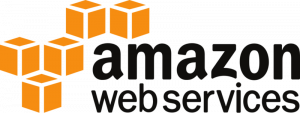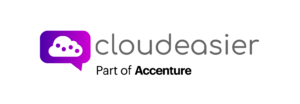Introduction
Keeping up to date with public cloud costs can be really tricky. When you combine the number of regions, the number of providers, the number of lines in their service catalog, and the different buying options that each one of them proposes, you have millions of scenarios to compare. And when you add to this the fluctuations of all these components every week… it becomes quite challenging.
But you know what? Challenge accepted!
Cloudeasier has created the C3I: The Cloudeasier Cloud Costs Indicator. Each month, Cloudeasier will publish an updated indicator, to give you deep insight into the pricing strategy and positioning of Amazon Web Services, Microsoft Azure, and Google Cloud Platform. More providers will be added over the next weeks.



How does it work?
Using our multi-cloud pricing calculator available at Cloudeasier, we will run quotations of three different templated platforms.
This calculator is updated daily with the full pricing catalog from Azure, AWS, and GCP. And it detects every requirement, the best template, configuration, and purchase option to choose, i.e. the cheapest that fits the technical specifications.
The C3I will be calculated as follows:
– All template platform will be quoted for all providers in all zones.
– For each provider/template, we take the cheapest, the most expensive, and the average and give a detailed view:

– Then, we calculate the indicator itself. The indicator is based on a quotation that includes all template platforms. Then,for each provider, we calculate a note with the following weighting coefficient: Coefficient 3 for the cheaper region, coefficient 5 for the average of all regions, coefficient 2 for the most expensive region.
We will be providing month to month comparisons and analyses explaining the variations (pricing update, new templates, new buying model, etc…)
Also, in S2 2020, we will be adding to C3I other templates that include more PaaS options(functions, Kubernetes, Database)
Want to know more about the templated platforms? Read on
Platform 1: Web App
With each new deployment of a web application project, Companies must crunch the numbers for this kind of platform. typically such a platform comprises the following servers.
- Two back-en and two front-end servers, each with 4 CPUs 8 GB of ram for the production environment. It is often interesting to reserve servers for this type of use since they are used 24/7 all month
- Two lesser powerful servers for staging, one for the back-end and one for the front-end, each with 2 CPUs and 6 GB of RAM. Generally, these servers are not solicited more than 100 hours per month because staging phases are short-lived.
- A standalone server with the same configuration as a staging server, used for user acceptance tests with usage not expected 100 hours per month.
- A final server for the development environment of the web application with 2 CPUs and 6GB of RAM. This server sees more use than staging and acceptance, but less than production. This is because the development team constantly relies on this server but only during working hours, which usually amounts to 230 hours per month.
We allow a 1-year reservation when it’s cheaper, but without upfront.
Shared CPU machines have very competitive prices compared to other dedicated CPU offerings. As such, we include these as candidates for non-production environments.
For storage, all servers are considered to be equipped with 50 GB of integrated storage for hosting the operating system in addition to a 100 GB disk tuned for optimal database performance.
To finish, we add 500Go of Bandwith and 100 Go of hot Object storage with regional redundancy.

Platform 2: File sharing
Companies often use file servers to centralize data storage and track file versions, Some file servers provide further advantages in terms of security as ease of access.
We have chosen a typical file server platform:
- Two production servers with 4 CPUs and 16 GB of RAM, and a 4 TB disk tuned for database-like performance.
- two staging servers with same amount of CPU and RAM, but only 500 GB disk.
This platform must be accessible all the time and is crucial for operating a healthy business, this is reason enough to opt for the best possible purchasing method: a 3-year commitment on the machines and a full payement upfront.
No object storage here, but 2 To of bandwidth






